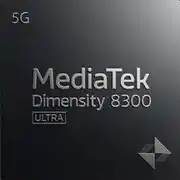Qualcomm Snapdragon 8 Elite vs Qualcomm Snapdragon 8 Gen 3
SoC Comparison Result
Snapdragon 8 Elite vs 8 Gen 3 - how it feels
The new Snapdragon 8 Elite is a step forward not just in numbers but in how the phone feels in hand. The UI responds faster, games keep high frame rates longer, and the camera handles night scenes and noise reduction more confidently. Snapdragon 8 Gen 3 remains a very powerful flagship from the previous wave. It is mature, reliable, and often cheaper in shipping devices.
What you notice in real use
-
Speed and smoothness. The Elite holds peak performance more readily and sags less in long sessions. Gen 3 is fast, but under sustained load it delivers a bit less.
-
Games. The Elite brings next-gen graphics. Demanding titles run more steadily, ray tracing works better, and AI upscaling helps. Gen 3 is also excellent, just with less headroom for the future.
-
Camera and video. The Elite merges frames in the dark faster, suppresses noise more delicately, and handles 4K at high FPS with more confidence. Gen 3 performs great in daylight and good lighting.
-
AI features. On the Elite, local generative features start quicker and more often run fully on-device. On Gen 3 they are present, just slower.
-
Battery life. With the same battery capacity, the Elite is more efficient in heavy tasks. The gap is small but noticeable in gaming and video capture.
Pick the 8 Elite if
-
You want maximum headroom for games and camera for the next 2-3 years.
-
Local AI capabilities without the cloud and fast photo/video processing matter to you.
The 8 Gen 3 is enough if
-
You want top-tier performance without overpaying.
-
Your main use is social apps, messaging, browsing, daytime photos, and occasional gaming.
Bottom line. The Elite is about headroom and new capabilities. The Gen 3 is about maturity and price. The choice comes down to what you value right now: maximum future-proofing or a solid flagship base at a friendlier cost.
Advantages
- Higher Technology: 3 nm (3 nm vs 4 nm)
- Higher Frequency: 4320 MHz (4320 MHz vs 3300 MHz)
- Newer Launch Date: October 2024 (October 2024 vs October 2023)
Basic
GPU Specifications
Connectivity
Memory Specifications
Miscellaneous
Benchmarks
Related SoC Comparisons
Share in social media
Or Link To Us
<a href="https://cputronic.com/index.php/soc/compare/qualcomm-snapdragon-8-elite-vs-qualcomm-snapdragon-8-gen-3" target="_blank">Qualcomm Snapdragon 8 Elite vs Qualcomm Snapdragon 8 Gen 3</a>





